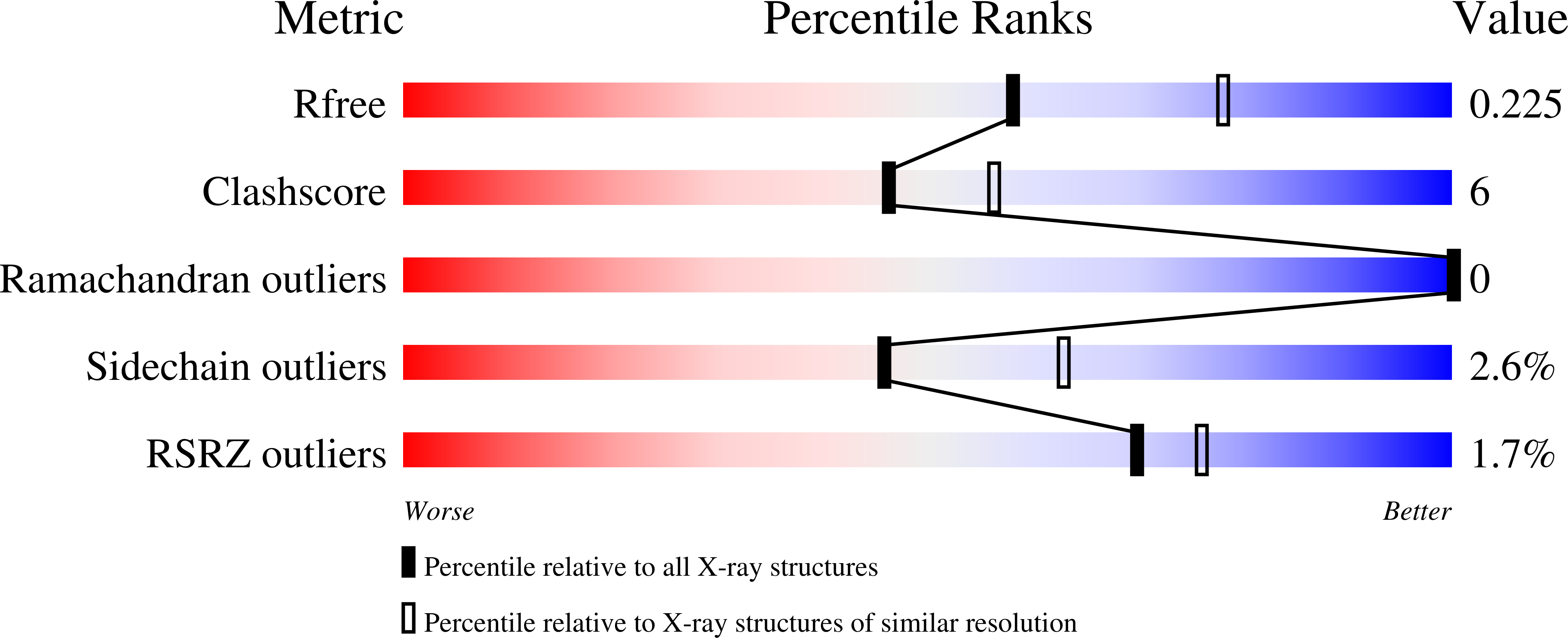Identification of the I38T PA Substitution as a Resistance Marker for Next-Generation Influenza Virus Endonuclease Inhibitors.
Jones, J.C., Kumar, G., Barman, S., Najera, I., White, S.W., Webby, R.J., Govorkova, E.A.(2018) mBio 9
- PubMed: 29691337
- DOI: https://doi.org/10.1128/mBio.00430-18
- Primary Citation of Related Structures:
5VP8, 5VPT, 5VPX, 5VQN, 5VRJ - PubMed Abstract:
The clinical severity and annual occurrence of influenza virus epidemics, combined with the availability of just a single class of antivirals to treat infections, underscores the urgent need to develop new anti-influenza drugs. The endonuclease activity within the viral acidic polymerase (PA) protein is an attractive target for drug discovery due to the critical role it plays in viral gene transcription. RO-7 is a next-generation PA endonuclease inhibitor of influenza A and B viruses, but its drug resistance potential is unknown. Through serial passage of influenza A(H1N1) viruses in MDCK cells under selective pressure of RO-7, we identified an I38T substitution within the PA endonuclease domain that conferred in vitro resistance to RO-7 (up to a 287-fold change in 50% effective concentration [EC 50 ]). I38T emerged between 5 and 10 passages, and when introduced into recombinant influenza A(H1N1) viruses, alone conferred RO-7 resistance (up to an 81-fold change in EC 50 ). Cocrystal structures of mutant and wild-type endonuclease domains with RO-7 provided the structural basis of resistance, where a key hydrophobic interaction between RO-7 and the Ile38 side chain is compromised when mutated to the polar threonine. While Ile38 does not have a crucial role in coordinating the endonuclease active site, the switch to threonine does affect the polymerase activity of some viruses and influences RO-7 affinity for the PA N target (i.e., the ≈200-residue N-terminal domain of PA). However, the change does not lead to a complete loss of replication activity in vitro Our results predict that RO-7-resistant influenza viruses carrying the I38T substitution may emerge under treatment. This should be taken into consideration for clinical surveillance and in refinement of these drugs. IMPORTANCE The effectiveness of antiviral drugs can be severely compromised by the emergence of resistant viruses. Therefore, determination of the mechanisms by which viruses become resistant is critical for drug development and clinical use. RO-7 is a compound that potently inhibits influenza virus replication and belongs to a new class of drugs in late-stage clinical trials for treatment of influenza virus infection. Here we demonstrate that a single amino acid change acquired under prolonged virus exposure to RO-7 renders influenza viruses significantly less susceptible to its inhibitory effects. We have discovered how the mutation can simultaneously interfere with drug activity and still maintain efficient virus replication. These findings have important implications for the development of more effective derivatives of RO-7-like drugs and provide guidance for how to monitor the emergence of resistance.
Organizational Affiliation:
Department of Infectious Diseases, St. Jude Children's Research Hospital, Memphis, Tennessee, USA.

















